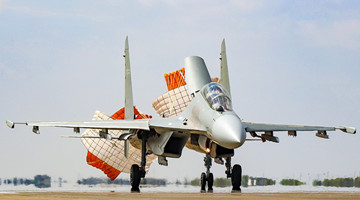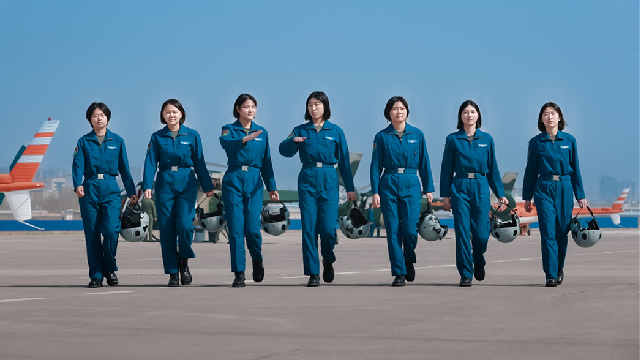By Wang Haili
On June 2, the 18th Shangri-La Dialogue (SLD) concluded in Singapore. On May 31, just before the event opened, its sponsor, the International Institute for Strategic Studies (IISS), deliberately made a special arrangement. They hung huge pictures above the aisle toward the meeting venue, which demonstrated China’s military deployments and details of military deployments, with some sensitive regions being intentionally enlarged. Upon the request of the Chinese delegation, the IISS eventually removed those pictures, but such a move has already created irreversible damage to China’s national image.
This “special arrangement” implies the multiple “unkind intentions” of the IISS.
First, erect a “target” for the US to denounce China.
In its early days, the SLD received great attention and high praise from many Western countries and Asia-Pacific countries for its inclusiveness, flexibility, openness, innovation and effectiveness, and had become a high-level platform for nations in the Asia-Pacific region to conduct defense exchanges and cooperation. However, since the US began to sensationalize the South China Sea issue, the IISS agenda setting gradually deviated from the former “inclusive and neutral” stance of the SLD, and became increasingly focused on China-US frictions and disputes between China and other countries. In this context, the SLD gradually became a platform “set up by the UK and leading by the US” to smear and assail China. In the past few years, the agenda setting of the SLD has always prioritized the demand of the US. Meanwhile, the US representative is always the first to give a speech at the event, with the “China threat theory” being the persistent theme.
Prior to this year’s SLD, news outlets like CNN published a video on islands and reefs in the South China Sea, filmed by a US military aircraft. On May 28, the Australia-based Lowy Institute, which has close relationships with Britain and the US, unveiled the 2019 Asia Power Index, in which China scored 75.9 points, second only to the 84.5 points of the US. The Lowy Institute declared that the US may be a dominant military force in Asia for now, “but short of going to war, it will be unable to stop its economic and diplomatic clout from declining relative to China’s power.”
Obviously, Western countries such as the US and the UK once again attempted to make the 2019 SLD an arena to “attack” China. The IISS intentionally hung pictures depicting China’s military deployments merely in order to pave the way and provide sufficient pretext for the US to impose military pressure on China.
Second, set a trap and give a strong hint to motivate neighboring countries’ hostility toward China.
In recent years, due to alienating behaviors of hostile forces outside the region and impact of territorial and island disputes left by history, some neighboring countries have been suspicions and anxious about China’s development, resulting in tense regional situation at times. However, thanks for continuous communication, all the involved countries have increased mutual trust and defused doubts, and the regional situation has substantially improved in the past couple of years.
Before the 2019 SLD, the IISS deliberately neglected the fact that the US has deployed huge military forces in the Asia-Pacific region, but sensationalized China’s military strength. Evidently, this was because it didn’t want to see the improvement of relations between China and its neighbors. It tried to make use of the SLD to impose psychological cues, reminding participating countries of China’s military strength, with an aim to drive a wedge between China and its neighboring countries, hoping to earn illicit benefits from discord.
Third, create a contradiction and fabricate a plot to maintain its influence.
In order to maintain its influence, the IISS adopted a strategy of intentionally fabricating sentimental stories and creating conflicts when it designs the agenda of the SLD. Its move to sensationalize China’s military strength this year was exactly an embodiment of this strategy. Major General Ji Yinan from the National Defense University of the Chinese People’s Liberation Army commented that, this move implied that the sponsor hoped to make China a target, and motivate other countries to quarrel with China, just as a TV variety show that might receive higher views if invited guests fall into a fierce squabble.
With this move, the IISS not only tried to attract eyeballs and draw more attention, but also intended to maintain its presence and increase its influence through deliberately creating conflicts. From a deeper perspective, this inherited the habitual approach of the UK. After the end of World War II, the UK was not reconciled to lose its past glory as “the empire on which the sun never sets.” To maintain its presence in the Asia-Pacific region, it created and left many historical problems in the region, such as the Kashmir conflict and the McMahon Line, in order to leave “interest gaps” so that it could intervene in Asia-Pacific affairs in the future. The move that the IISS took at the SLD was based on an intention just as the UK ever did—to prevent it from being driven away or to maintain its presence even if it has to leave in the future, through deliberately creating and escalating conflicts.
Despite the fact that Western countries have used the SLD to smear and besiege China for many years, the Chinese side still insists on sending a delegation every year to attend the event and communicate its stance with other participating countries, in hopes to clarify the truth, increase mutual trust, defuse doubts and safeguard regional pace and stability. This year, China even sent an ever-largest delegation headed by Defense Minister General Wei Fenghe.
Aware that the SLD is a “trap” set by some Western countries, China still attended the event fearlessly, taking the bull by the horns. Its courage is deeply rooted in such a belief that history will vindicate those who stand on the side of justice. When addressing the opening ceremony of this year’s SLD, Singaporean Prime Minister Lee Hsien Loong recounted the history of Singapore with emotions, which just testified to this point. We firmly believe that the tide of peace, development and cooperation will eventually wash away the reverse flow of war, poverty and confrontation.
(The author Wang Haili is a senior researcher fellow at the Center for Policy Studies of the Grandview Institution.)
Disclaimer: This article is translated from Chinese into English and edited by the China Military Online. The information, ideas or opinions appearing in this article do not reflect the views of eng.chinamil.com.cn.









